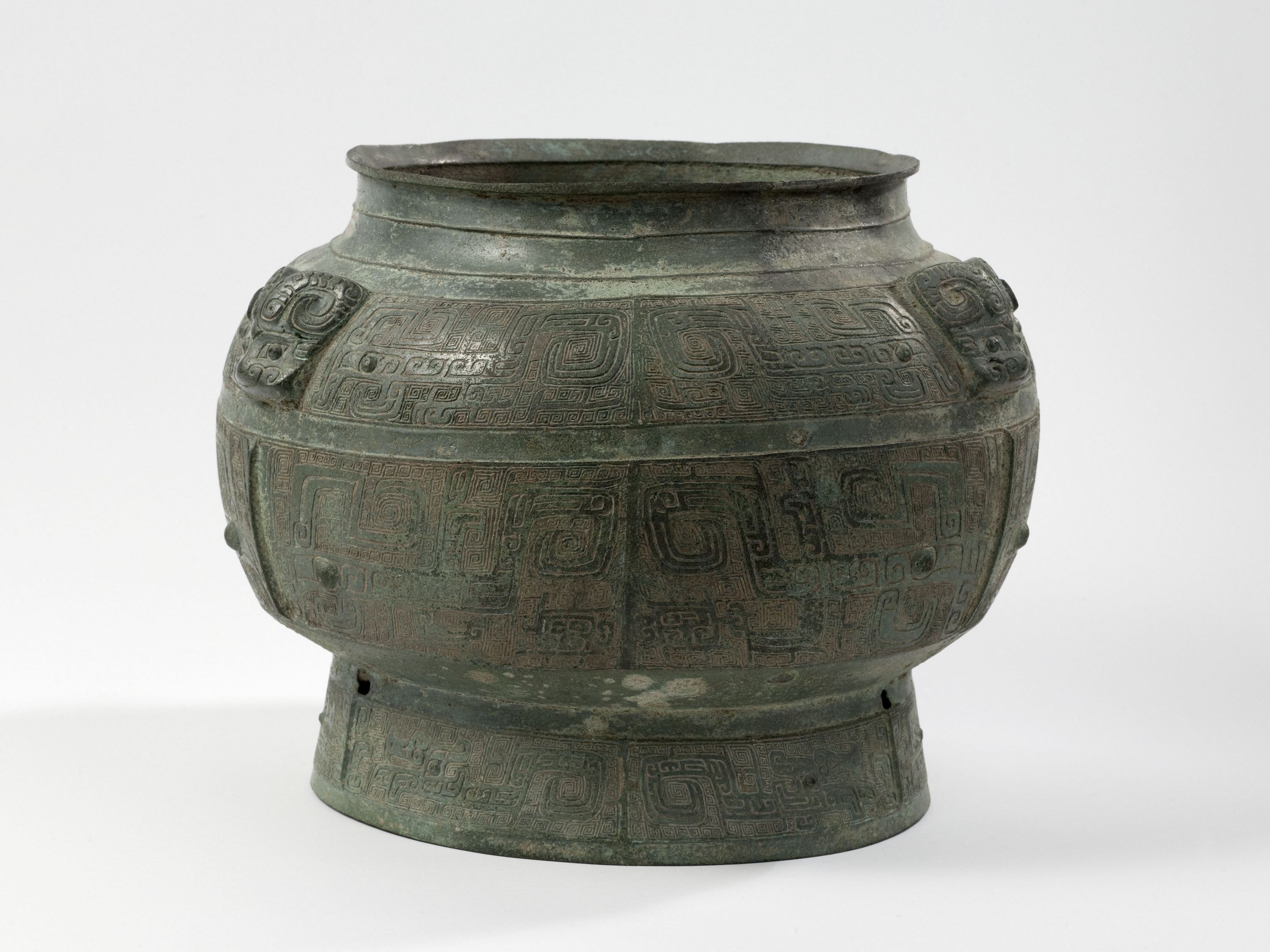
Vase pou
Bronze, Fonte, Fonte au moule
Vaisselle et ustensile de cuisine, Vase, Objet religieux
Achat
M.C. 8760
Inscription: You of the Ya clan
The literati of the Northern Song period (960-1227) used the term pou for ancient vases that were wide and squat, with a narrow neck and a ring base. These vessels would always have had a lid, which rarely survives to this day. Some authors classify them among bronze vessels used for solid foodstuffs, while others believe they were for fermented beverages. They take the form of certain ceramic vessels from the Neolithic era.
On the three wide bands of the Cernuschi Museum pou, three sheep masks in high relief on the shoulder and shallow grooves on the belly and foot contrast against a flat decoration of long kui-type dragons on a ground of square spirals. These dragons vary slightly from one band to the next. On the belly and foot, they face each other on either side of the grooves, forming taotie masks with protruding eyes in high relief. This decorative ensemble corresponds to the style no. IV as defined by Max Loehr.
There are many pou that can be compared to the Museum Cernuschi piece. In addition to those listed by Vadime Elisseeff, notably including one in the Cleveland Museum of Art and one in the Museum of Fine Arts, Boston, are a specimen in the Museum Rietberg in Zurich and the Arthur M. Sackler Foundation piece in Washington.
On the work described here, the two characters making up the inscription are also to be found on a fang lei at the Nezu Museum in Tokyo. R. Bagley has suggested that the two pieces were made for the same commission. The Nezu Museum lei is identical to a pair of fanglei discovered in Tomb No. 5 at Anyang that is usually dated to the late Wuding reign, perhaps the second king of Anyang (13th century BC-?). But this theory does not easily square with the style of the Museum Cernuschi pou, which is characteristic of the last phase of production in Anyang (12th century -first half of 11th century BC). Furthermore, bronzes with a light green patina in southern China are usually described as having an ash tinge.
Gilles Béguin, Arts de l’Asie au Musée Cernuschi, Paris Musées / Findakly, 2000, p.34-35.
Vadime Elisseeff, Bronzes archaïques chinois au musée Cernuschi, vol.1, t.1, n°23, Paris, L'Asiathèque, 1977, p.155.